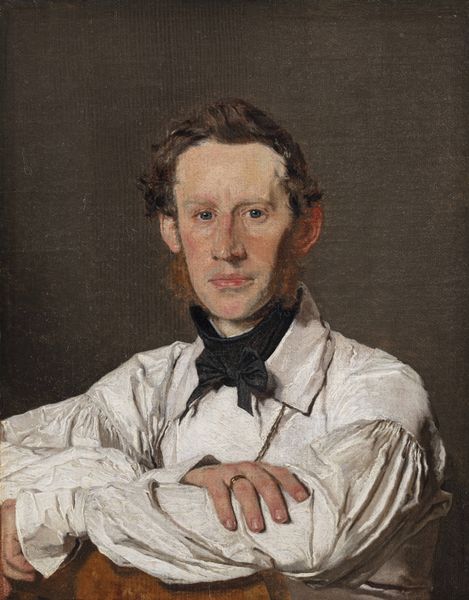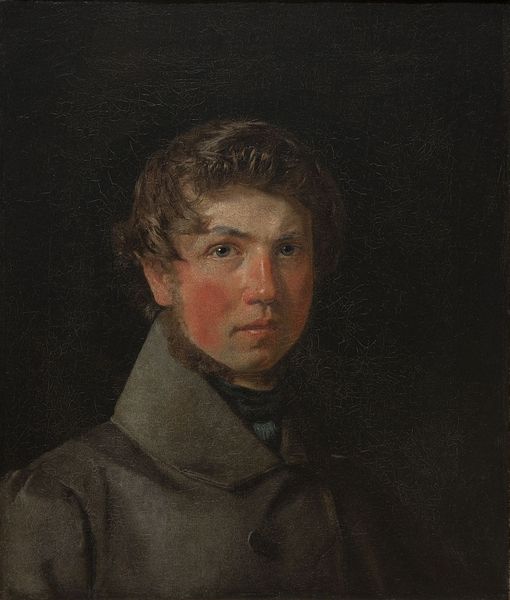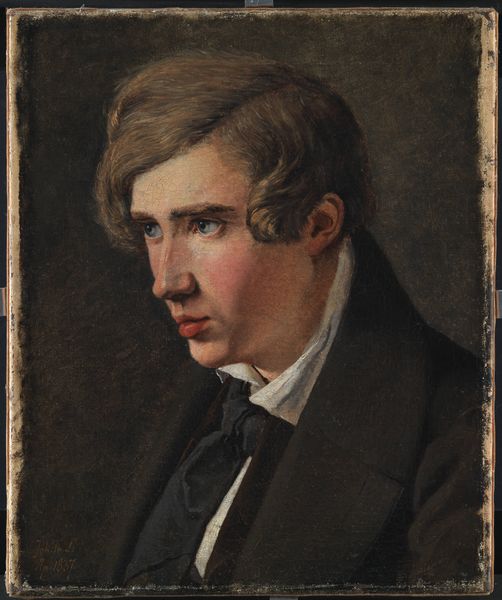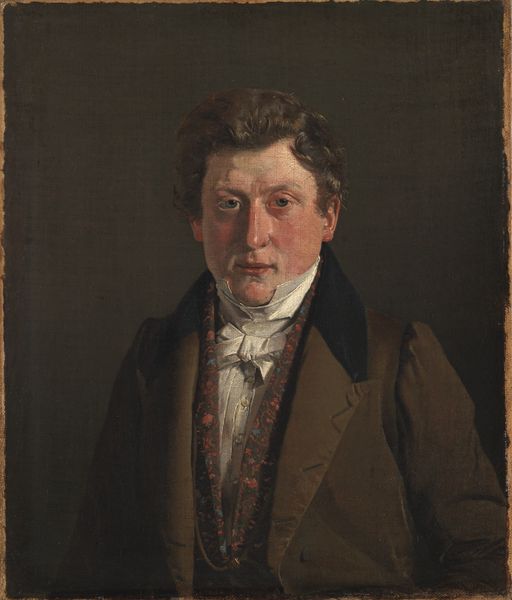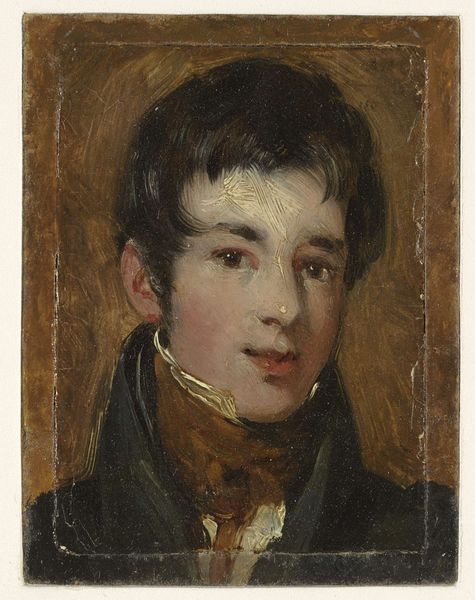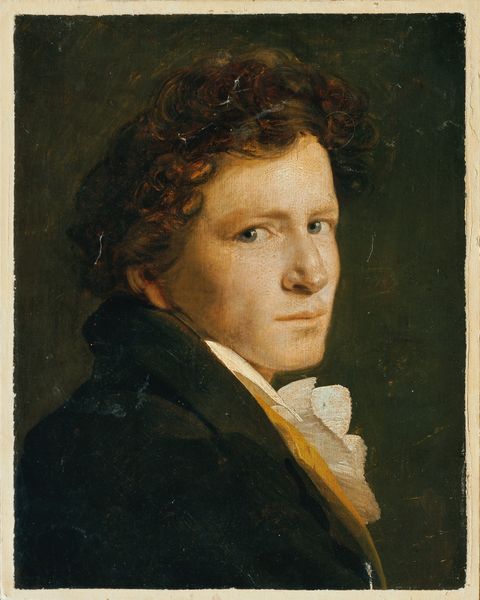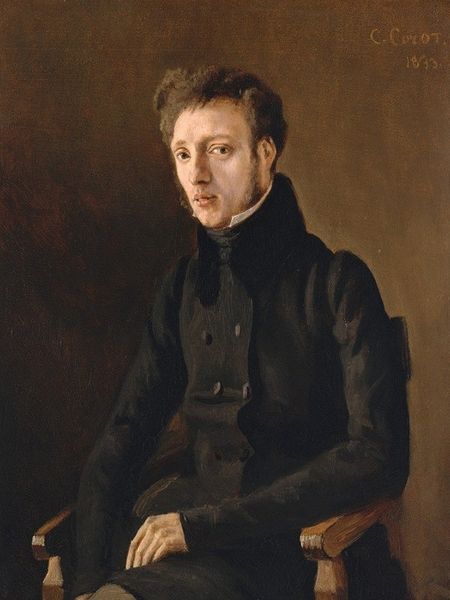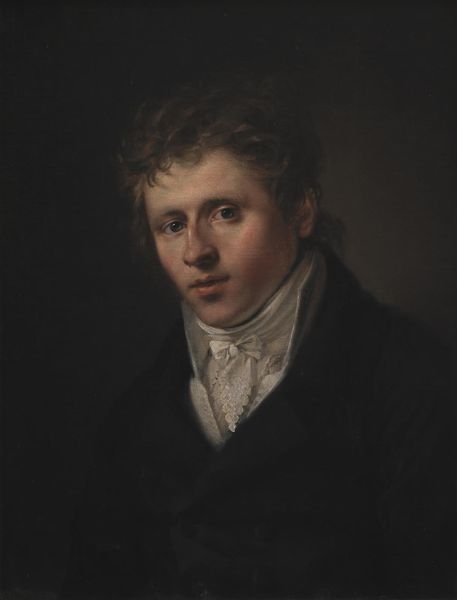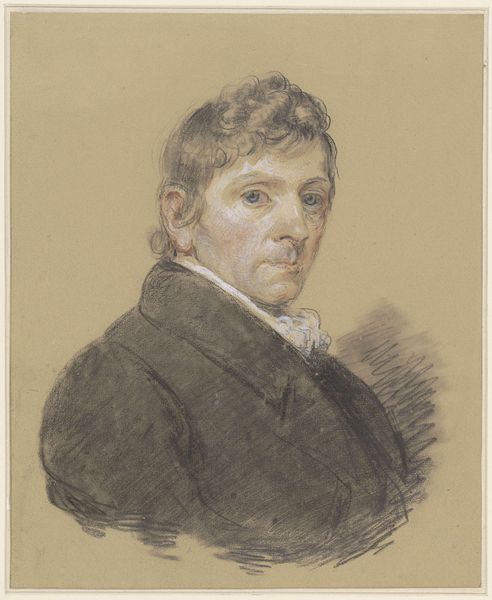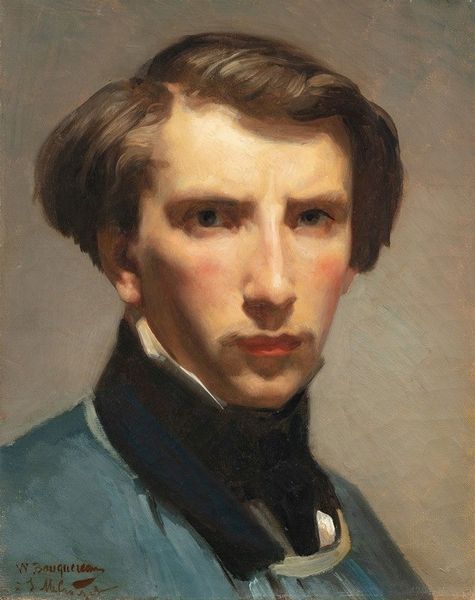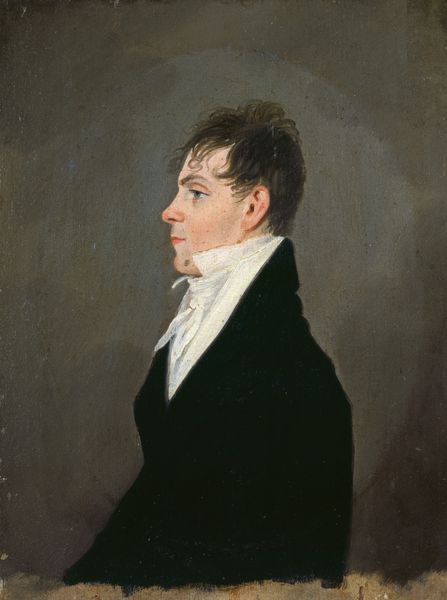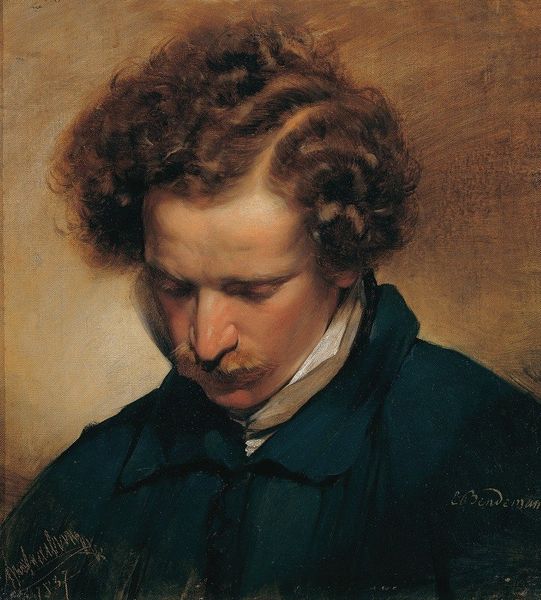
painting, oil-paint
#
portrait
#
painting
#
oil-paint
#
romanticism
#
realism
Dimensions: 18.5 cm (height) x 15 cm (width) (Netto), 28.8 cm (height) x 25.6 cm (width) x 7.5 cm (depth) (Brutto)
Curator: Christen Købke painted this compelling likeness in 1836; it’s titled *Portrait of the Painter Wilhelm Marstrand.* Editor: Well, my first reaction is one of intrigue – a sense of the sitter’s nonchalance is almost palpable. Note the slight upturn of the lip; the placement of the flower. Curator: Exactly. Let's consider the interplay between Romanticism and nascent Realism present here. The meticulous detail of Marstrand’s attire contrasted with the loose brushwork of the face. The stark contrast is the painting's essential component. Editor: But the material narrative also sings. Observe the meticulous detail of the man's clothing, typical garb of that time - jacket, shirt, and bow tie - the costume of labor if you will. Look at the sheen of the oils giving an almost topographic feeling to the fabric folds. Consider the materiality, not merely in conveying light and shadow, but indicating the textures that surround the subject daily. Curator: True, but even more compelling is Købke’s masterful control of tone. The dark background pushes the figure forward and contributes to the introspective, almost brooding mood, no? He truly understood how a limited palette could speak volumes. Editor: Precisely, and this very control raises fascinating questions. Consider, though, what lies behind those subdued shades and smooth surface. This is an artisan using pigments –ground and mixed. We see the layering, brushwork… Curator: Very interesting! The subtle use of impasto adds another textural layer, indeed drawing us back to the artwork as object. The visible brushstrokes serve almost as a visual cue, pointing toward a construction, an illusion. Editor: Yes. This close observation reveals process: from material selection, mixing paint to execution. It shifts our view past idealization and centers what goes into constructing an identity or indeed profession! The quiet labor of representing labor and status is very compelling to me. Curator: A striking balance, I'd say, of capturing both a likeness and exploring the possibilities of paint. Thank you for this analysis! Editor: It offers such valuable insight, I learned from you too.
Comments
No comments
Be the first to comment and join the conversation on the ultimate creative platform.
